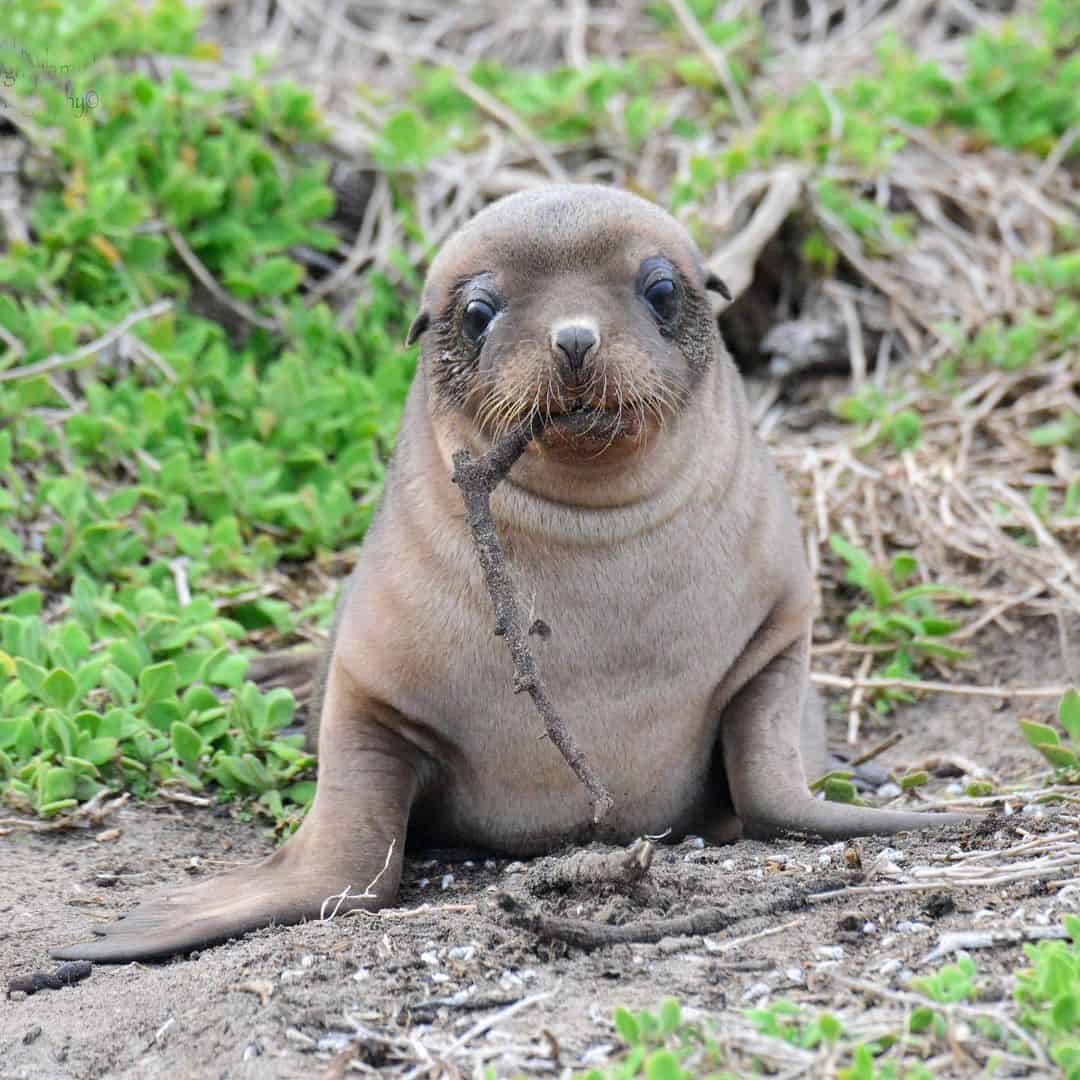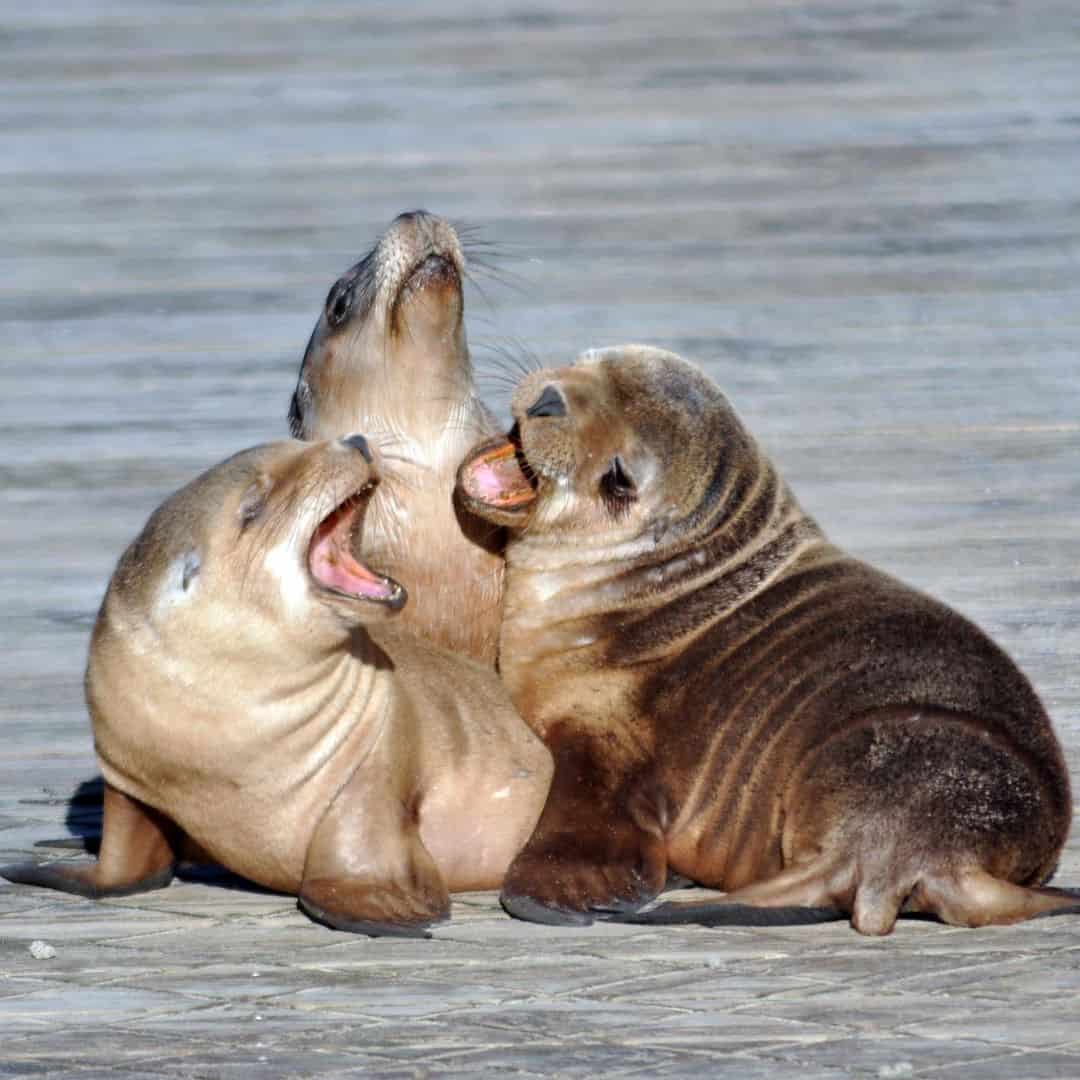Check out our special offer at the end of this blog
Australian sea lions (Neophoca cinerea) are part of a group known as ‘eared’ seals, and are a type of seal that are native to Australia. They use their front flippers to prop themselves up and their back flippers to help them to ‘walk’ on land. In the water their back flippers act as a rudder to steer. They are very social animals and when not feeding out at sea, they spend time resting and sunbaking on sandy beaches and rocks.
These beautiful animals live in colonies made up of small populations along the coastline of South Australia (SA) and Western Australia (WA). The Australian sea lion was nearly hunted to extinction in the 19th century, and are listed as endangered and declining on the IUCN Red List. They are also listed as vulnerable under Australian law.
They are one of the rarest species in the world and their entire population is estimated to be less than 12,000. Of these, 85% live in South Australia and the rest in Western Australia. Seal Bay is home to the third largest colony of Australian sea lions with an estimated population of 800. This is about 5% of the world's total.
Australian sea lions have a life span of between 17 and 25 years. Males mature between eight and nine years of age, and females from three years. The long period between birth and reaching maturity is one of the reasons for the slow population growth of the Australian sea lion.
A full-grown, male sea lion (a bull) has brown hair, a blonde mane and can weigh up to 350kg. Females and juveniles are ash grey on top with cream underbellies. A full-grown female will weigh up to 100kg.


The Australian sea lion feeds along the continental shelf, most in depths of 20–100m. They feed from the sea floor, catching creatures such as octopus, cuttlefish, small rays, sharks and rock lobster. When feeding, male sea lions will travel up to 100km and females up to 70km from their breeding colony. These trips average about 3 days and in that time a sea lion will dive 900-1200 times.
Breeding colonies are located only on remote areas of the coastline or islands and only 66 breeding colonies are known, 39 of those are in South Australia. Most are very small and some of these are at risk of becoming extinct because each breeding colony is a closed population. Each sea lion colony is genetically distinct from neighbouring colonies and other populations. Female sea lions practice what is called ‘philopatry’, meaning they return to the same breeding colony throughout their lives, and their pups do the same. Therefore Australian sea lion colonies don’t tend to mix – making each breeding site a closed population. It also means that they are unlikely to expand their range or recolonise breeding sites that have already become extinct.
During the breeding season, mature bulls fight for access to females. They become aggressive and territorial, defending females from other males. Timing of the birth of pups is not the same at each colony. Females can fall pregnant from the age of three and gestation time is 17.6 months – the longest of any seal species.
Australian sea lions were hunted heavily during the 19th century for their leather and oil. The population has never returned to its pre-hunting levels. The colony at Seal Bay is declining, though it still has more than 800 animals. There are regular surveys of sea lion populations. The surveys are invaluable as a comparison between seasons and a barometer of how the populations are faring.
It is normal for one third of sea lion pups to die before weaning. The major causes of death in sea lion pups are accidental crushing by adults (particularly fighting juvenile males), and deliberate attacks by sub-adult males.


The biggest threats to Australian Sea Lions are entanglement in marine debris and fishing gear. Up to 80% of this debris comes from the land, including rubbish dumped by beach visitors. Other threats include big sharks, being struck by boats, human disturbance, pollution, and overfishing which reduces access to prey.
The only solution to accidental gillnet deaths and other fishery-related deaths of sea lions is to close the areas where sea lions forage for food out at sea, and prevent fishing with gillnets in those areas. The distribution of Australia sea lion colonies in SA overlaps with a fishery managed by the Federal Government agency, the Australian Fisheries Management Authority (AFMA). In 2010, scientists published a report that found up to 374 Australia sea lions were killed in the fishery every 18 months. This report also indicated that this rate of fishery-induced deaths was too high for the sea lion populations to withstand – bringing Australian sea lions closer to extinction. In addition, commercial fishers were not reporting how many sea lions were being killed to AFMA, so the true cost of fishing to the species was hidden.
Strongly supported by the Australian public, the Australian Marine Conservation Society (AMCS) worked with the government, scientists and the fishing industry to create a solution for protecting sea lion colonies.
The areas of sea directly around sea lion breeding colonies are closed to gillnet fishing, and now, every fishing boat that fishes anywhere near sea lion colonies has to have cameras on board to monitor what is being caught. This means that if a sea lion gets killed, it now gets reported to AFMA. And when a sea lion does get killed, further areas are closed to all gillnet fishing to ensure sea lion colonies do not decline even further.
These endangered and fascinating mammals can be viewed up close at Seal Bay Conservation Park. The guided beach tours offered at Seal Bay Conservation Park are an exceptional wildlife experience. They don’t follow a standard script, but rather follow the natural rhythm of ‘colony life’. With some luck you will get within 10 metres of sea lions, and the guide will be interpreting their behaviour and what’s happening in the colony, as it happens. Highly recommended!!
Special offer:
When you book a stay of 3 nights or more at Ecopia this summer, we will include a guided tour at Seal Bay for 2 people, to see these gorgeous creatures up close and personal.
Click here for another fact sheet by the Australian Government – Department of Agriculture, Water and Environment.
Sources: Images by Nikki Redman @nikkiki73 (IG) @Nikki Redman Photos (FB)
https://www.sealbay.sa.gov.au/australian-sea-lion https://www.marineconservation.org.au/australian-sea-lions/

